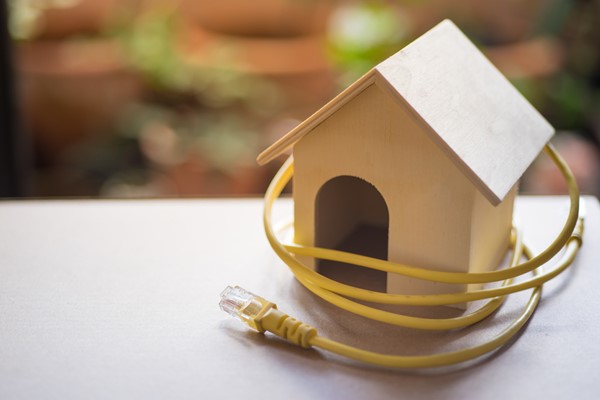
Not long ago to protect our homes from intruders we would lock the doors, the windows, close the blinds, leave a light on and possibly set the alarm. Today houses are full of devices that make our lives convenient such as computers, laptops, printers, smart televisions, streaming media devices, gaming consoles, smart appliances, digital assistants, mobile phones, tablets, baby monitors, web cameras, alarm systems, and cars. All of these devices have a commonality of being connected to the internet. Which means they also provide another means of breaking into homes... via the internet.
Protect your home network
Protection of your home network starts with your connection to the internet. You always close your windows and doors, and wouldn’t give strangers the keys, right? Make sure you are not allowing free access to your network by leaving your router or wireless access point unsecured. Some necessary steps to secure your network include:
- Change the administration login and password from the factory default. Anyone can quickly perform a web search and find the router or wireless access point manufacturers default username and password.
- On a wireless access point or router change the SSID (this is the name of your wireless network) you can name it whatever you want just do not leave the default name on.
- Enable encryption on your Wi-Fi network. There will be several choices of encryption to use. Select the WPA2 over WEP. If there is a choice of several WPA2 choose WPA2-PSK AES. Assign a passphrase that is at least 8 characters long and consists of letters (both upper and lower case), numbers, and special characters. The longer the passphrase the securer it is.
- Turn off guest networks unless you actually plan on using this feature.
- If your router supports the Wi-Fi Protected Setup (WPS) disable it. This is vulnerable to brute force attacks.
- Ensure that the router’s built-in firewall is activated. It will be NAT (network address translation) or SPI (stateful packet inspection). The firewall is another layer of protection for your network.
Keep Your Connected Devices’ Software Updated and Secured.
Enable automatic updates for the operating systems on your desktop computers, laptops, tablets, and smartphones. By getting these updates, you will get new software features and security patches for the device. Keep any anti-virus and anti-malware software updated too.
Over the next couple of days take a look at your home network and make sure you are not leaving the doors to the network unlocked. Talk to your technology providers about additional safeguards you can set up to protect your information.
About the Author

Gema Smith
Gema S. Smith has been an influential pioneer in the luxury real estate industry for over 30 years. With a reputation for providing first-class service and garnering impeccable results for her clients, Gema’s accomplishments have earned her mentions in San Jose Magazine as well as two State of California Senate Certificates of Recognition.
